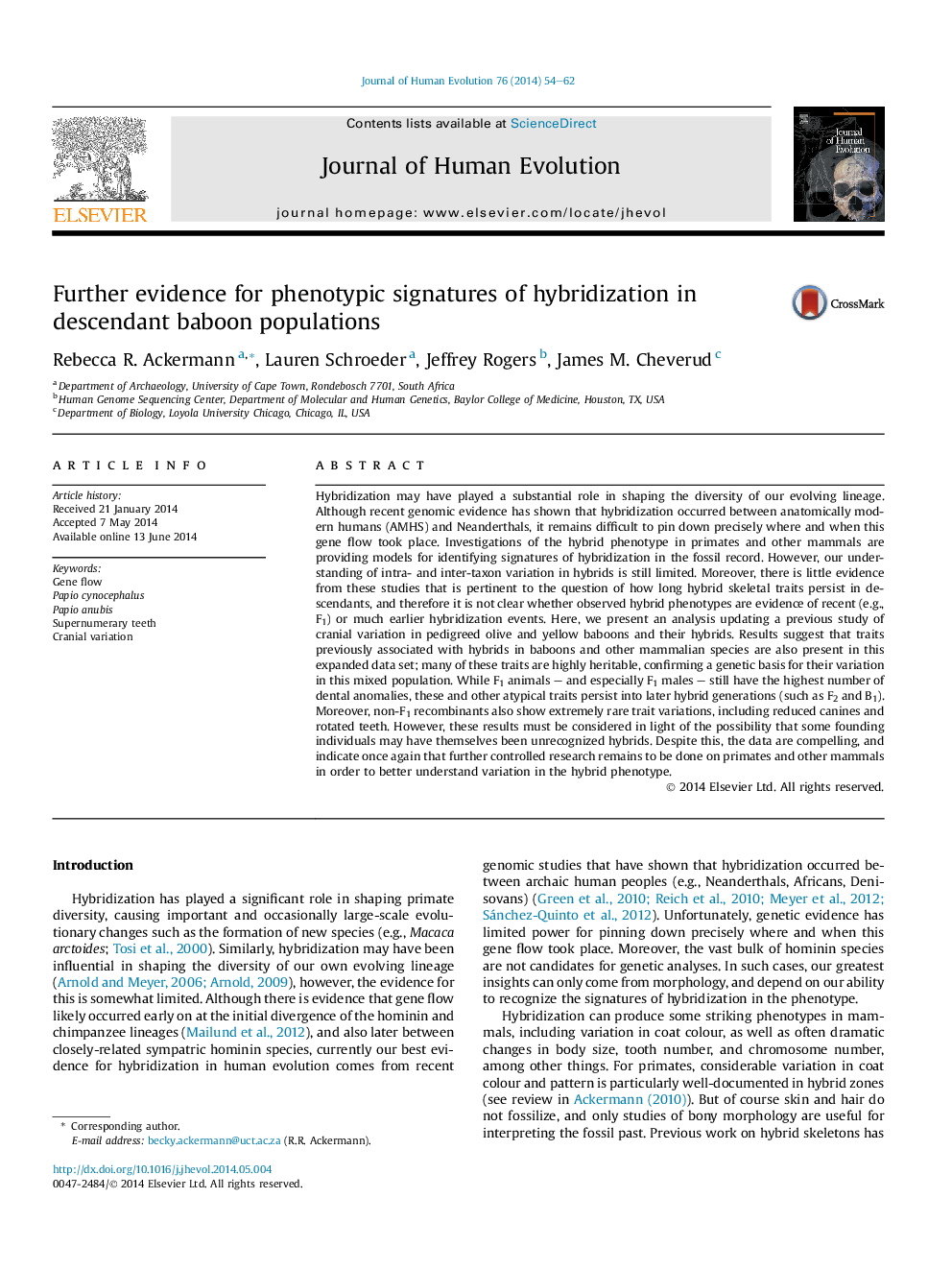| کد مقاله | کد نشریه | سال انتشار | مقاله انگلیسی | نسخه تمام متن |
|---|---|---|---|---|
| 6389222 | 1628173 | 2014 | 9 صفحه PDF | دانلود رایگان |
Hybridization may have played a substantial role in shaping the diversity of our evolving lineage. Although recent genomic evidence has shown that hybridization occurred between anatomically modern humans (AMHS) and Neanderthals, it remains difficult to pin down precisely where and when this gene flow took place. Investigations of the hybrid phenotype in primates and other mammals are providing models for identifying signatures of hybridization in the fossil record. However, our understanding of intra- and inter-taxon variation in hybrids is still limited. Moreover, there is little evidence from these studies that is pertinent to the question of how long hybrid skeletal traits persist in descendants, and therefore it is not clear whether observed hybrid phenotypes are evidence of recent (e.g., F1) or much earlier hybridization events. Here, we present an analysis updating a previous study of cranial variation in pedigreed olive and yellow baboons and their hybrids. Results suggest that traits previously associated with hybrids in baboons and other mammalian species are also present in this expanded data set; many of these traits are highly heritable, confirming a genetic basis for their variation in this mixed population. While F1 animals - and especially F1 males - still have the highest number of dental anomalies, these and other atypical traits persist into later hybrid generations (such as F2 and B1). Moreover, non-F1 recombinants also show extremely rare trait variations, including reduced canines and rotated teeth. However, these results must be considered in light of the possibility that some founding individuals may have themselves been unrecognized hybrids. Despite this, the data are compelling, and indicate once again that further controlled research remains to be done on primates and other mammals in order to better understand variation in the hybrid phenotype.
Journal: Journal of Human Evolution - Volume 76, November 2014, Pages 54-62
